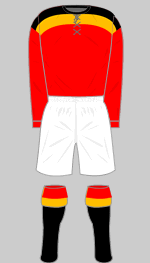Bradford (Park Avenue)
Formed 1907. Wound up May 1974.
Elected to Division Two 1908. Failed re-election 1970.
Kit History
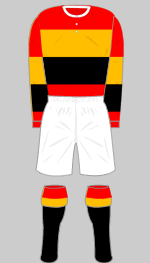
1910-1911 f h u
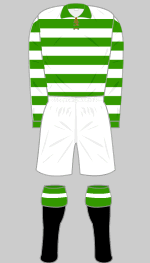
1911-1914 a h u
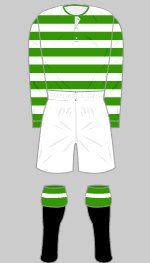
1914-1915 h n

1917-1918 t
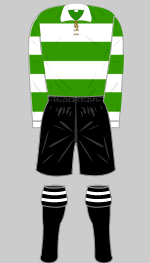
1918-1919 h u

1919-1920 m

1920-1922 n

1922-1924 h
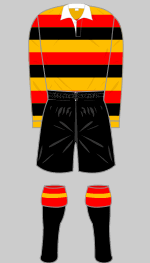
1924-1925 h s
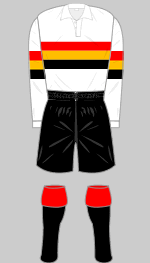
1925-1926 h u
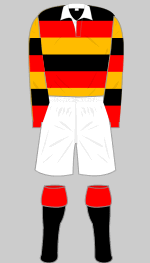
1926-1928 v
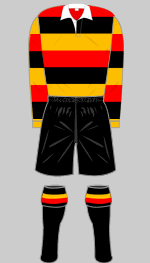
1928-1929 h n u
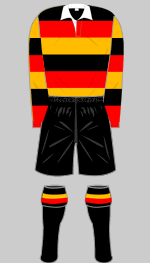
1930-1931 u
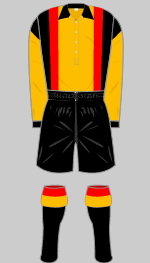
1931-1932 1 k r

1931-1932 2 r

1933-1934 n
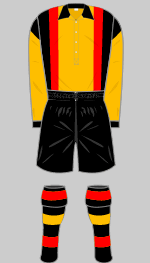
1934-1935 g h n
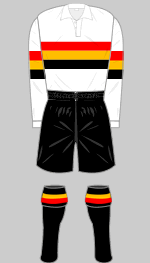
1935-1938 k u
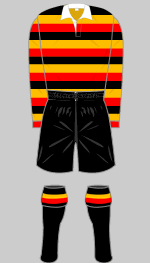
1938-1939 h

1945-1946 m
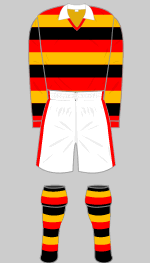
1946-1947 k u
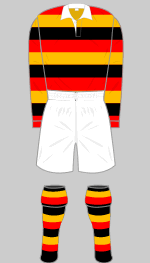
1947-1948 u
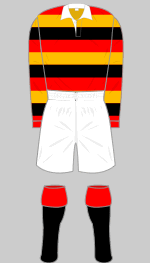
1948-1949 k m n p u
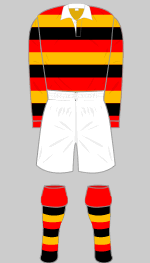
Aug-Nov 1950
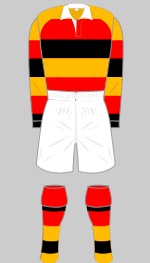
Dec 50-1953 h k m u w
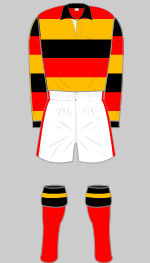
1953-1954 h m n u
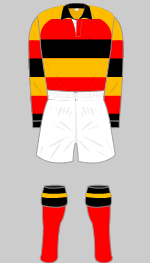
1954-1955 u
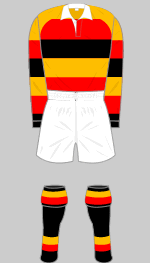
1955-1956 u
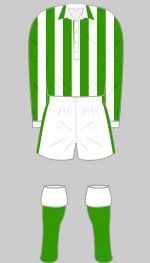
1956-Nov 57 k u
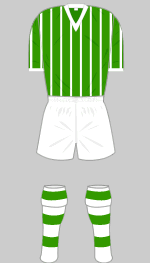
Dec 57-May1958 k u
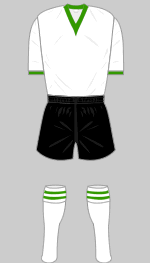
1958-1959 k
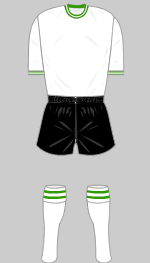
1959-Jan 1960 k
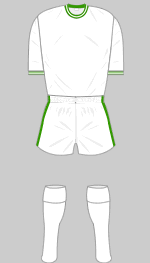
Jan-May 1960 k

1960-1962 h l x
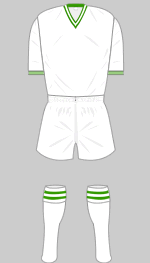
1962-1963 j
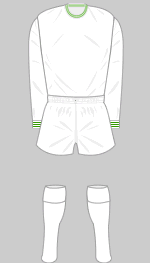
1963-1964 y

1965-1967 h q
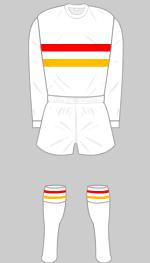
1967-1968 h o u
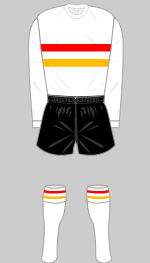
1968-1969 h o u
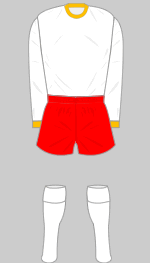
1969-1970 h k u
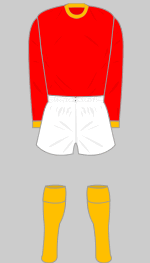
1970-1971 l

circa Feb 1971 l
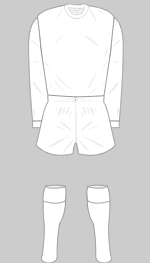
1971-1972 k
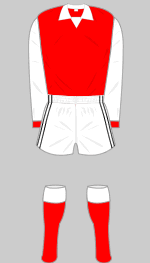
1972-1973 k
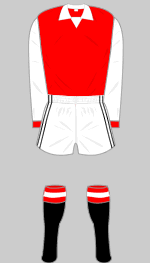
1973-1974 k
Background
 Bradford was originally a rugby club, formed in 1863. Following a dispute with the Rugby Football Union over the payment of expenses to players, Bradford, along with the other rugby teams from Yorkshire and Lancashire formed the Northern Rugby Football Union in 1895. They won the championship in 1904 and the Challenge Cup in 1906.
Bradford was originally a rugby club, formed in 1863. Following a dispute with the Rugby Football Union over the payment of expenses to players, Bradford, along with the other rugby teams from Yorkshire and Lancashire formed the Northern Rugby Football Union in 1895. They won the championship in 1904 and the Challenge Cup in 1906.
Although Bradford RFC was the pre-eminent and wealthiest of the teams in the area, by he turn of the century, crowds were dwindling to such an extent that one of Bradford's rival teams, Manningham RFC, decided to switch to playing association football as Bradford City in 1903. Within three years, City were attracting crowds of over 11,000 to their games while Bradford's attendance fell to less than half that figure.
It became clear to the committee that something had to be done and in April 1907 a proposal was put forward to merge with Bradford City (now playing in the Football League) and play at Park Avenue, which was considerably bigger than City's ground. Bradford's predominantly middle-class membership was profoundly opposed to merging with the football club, which drew its support from the city's working class, and not only roundly rejected the proposal at an Extraordinary General Meeting on 15 April 1907, but also resolved to return to amateur status and rejoin the RFU. The club chairman, Arthur Briggs, who missed the meeting through ill-health, was enraged and set about reversing the decision and steamrollering the merger through without the approval of the membership, a decision dubbed "The Great Betrayal" by his critics. With the committees of both clubs now in agreement, the Bradford City members were asked to vote. Class antagonism was just as strong among City's working-class members as was the suspicion that this would not be a merger but a total takeover by the wealthy and influential Bradford club, and that City's identity would be lost. In the event the proposal was defeated by a margin of 2-1.
There was now no alternative for Briggs and his committee but to form a professional team of their own. Meanwhile those members who had opposed the switch to football formed two new clubs: Bradford RFC (now Bradford & Bingley RFC) became an amateur team following the union code while Bradford Northern (now Bradford Bulls RFC) would be professional and joined the Northern Rugby Union.
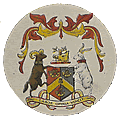 Although their official title throughout their existence remained Bradford AFC, (the name "Bradford United" had already been registered - by Bradford City) the name of their ground, Park Avenue, was usually added in brackets to distinguish the new club from its rivals. The team continued to play in their original red, amber and black colours, as did the two rugby clubs. These are also the colours of Bradford Cricket Club, who originally played at Park Avenue. The club adopted the city's coat of arms as their crest but the only time this featured on their shirts was in the mid-sixties on a change strip.
Although their official title throughout their existence remained Bradford AFC, (the name "Bradford United" had already been registered - by Bradford City) the name of their ground, Park Avenue, was usually added in brackets to distinguish the new club from its rivals. The team continued to play in their original red, amber and black colours, as did the two rugby clubs. These are also the colours of Bradford Cricket Club, who originally played at Park Avenue. The club adopted the city's coat of arms as their crest but the only time this featured on their shirts was in the mid-sixties on a change strip.
The brand new club applied to join the Football League but were not successful. Instead, and despite their location, they joined the Southern League, filling the vacancy left by Fulham who had just been elected to the Football League. The committee engaged Archibald Leitch to rebuild their stadium and, despite a modest mid-table finish in 1908, they resigned from the Southern League to stake their future on a second application to join the Football League. The gamble paid off and this time Bradford were voted in.
In 1911 the club adopted green and white hooped jerseys when former Celtic player, Tom Maley became their manager. In 1914, they were promoted to the First Division. The following season a total of 51,000 spectators watched the two league games against Bradford City and Park Avenue finished ninth, their best ever League position.
After the First World War, Bradford reached the FA Cup quarter-final in 1920 but were relegated the following season. Worse was to come as the club dropped into Division Three (North) the following year. In 1928 they won the Third Division (North) championship and regained their place in the Second Division. In 1924 Bradford reverted to red, amber and black while adopting white shirts with a red, amber and black band as change colours, a kit identical to that worn by Bradford Northern RLFC. These were certainly worn as a first choice strip in 1925-26 and again in the mid-1930s.
Between 1931 and 1935 the team wore unique shirts designed by a supporter, Mr Langhorn, whose reward was to receive a season ticket. An odd feature of these tops was that some had amber sleeves, some were black and some were reversed on the back.
A degree of optimism was evident after the Second
World War. In January 1948 almost 48,000 fans witnessed a famous win in
the FA Cup at Highbury against Arsenal. The following year almost 83,000
spectators saw Bradford hold Manchester United to a draw in the FA Cup.
In 1950, however, the club was relegated to Division Three (North) and
embarked on what would prove to be a terminal decline. After several seasons rooted near the foot of Third Division (North) management decided on a change back to green and white but this failed to reverse te team's decline. When the regional
divisions were abolished in 1958, 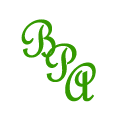 Bradford found themselves in the new
Fourth Division. Three years later the club achieved promotion but were relegated in 1963.
Bradford found themselves in the new
Fourth Division. Three years later the club achieved promotion but were relegated in 1963.
A fashionable monogram appeared on the club's stationary in the early 1960s but this was not worn on the team shirts. During the 1965-66 season, the Bradford coat of arms was worn on a white patch on Bradford's green change shirts.
The remarkable goal scoring ability of Kevin Hector kept the club afloat briefly but when he left to join Derby County in 1966, everything fell apart. In 1970 the club faced re-election for the fourth consecutive occasion and were duly voted out of the League, replaced by Cambridge United.
Bradford joined the Northern Premier League, wearing an all white kit, which was replaced in 1972 by a red and white outfit. Why the club abandoned tradition is unexplained - perhaps they were seeking a break from the past or financial problems forced the management to buy the cheapest kits they could find as the club fought for survival. After being compelled to quit their traditional home, the club shared City's Valley Parade for a while but mounting debts and falling attendances proved too great a burden. On 3rd May 1974, Bradford resigned from the NPL and was formally wound up.
A new club, also known as Bradford (Park Avenue) was formed shortly afterwards by supporters and currently plays in the National League. The team wears green and white with the old Bradford coat of arms as their official crest.
With acknowledgements to Richard Sanders' "Beastly Fury" (Bantam Press 2009 ISBN 978 059305 9708), from which much of the detail of the failed merger between Bradford City and Bradford RFC is derived.
Sources
- (a) Bradford PA Official Website
- (b) The West Ham United Collection (2003)
- (c) Hull City FC - Images of Sport
- (d) Aldershot FC Website
- (e) York City FC - Images of Sport (David Batters)
- (f) George W Reeves website - a curious site charting the brief career of George Reeves
- (g) The Football Encyclopaedia (Associated Sporting Press 1934) Information provided by Arthur Fergus
- (h) Greger Lindberg
- (i) Geoff Charles Collection at the National Library of Wales
- (j) John Dewhirst
- (k) "All About Avenue" (Tim Clapham) - information provided by Ralph Pomeroy
- (l) Ralph Pomeroy
- (m) Simon Monks
- (n) Keith Ellis
- (o) David Redwood
- (p) Michael Gluck
- (q) Stephen Whitrick
- (r) George Chilvers
- (s) Lancashire Evening Post (5 July 1924) submitted by Brian Webb
- (t) Star Green 'Un (8 December 1917) submitted by Richard Essen
- (u) Wool City Rivals (George Chilvers & John Dewhirst 2020) available from bantamspast.
- (v) Coloursport
- (w) eBay
- (x) Bradford Sports History
- (y) Coloursport
Original club crest provided by John Dewhirst. Team photograph colourised by George Chilvers & taken from from Wool City Rivals available from bantamspast.

